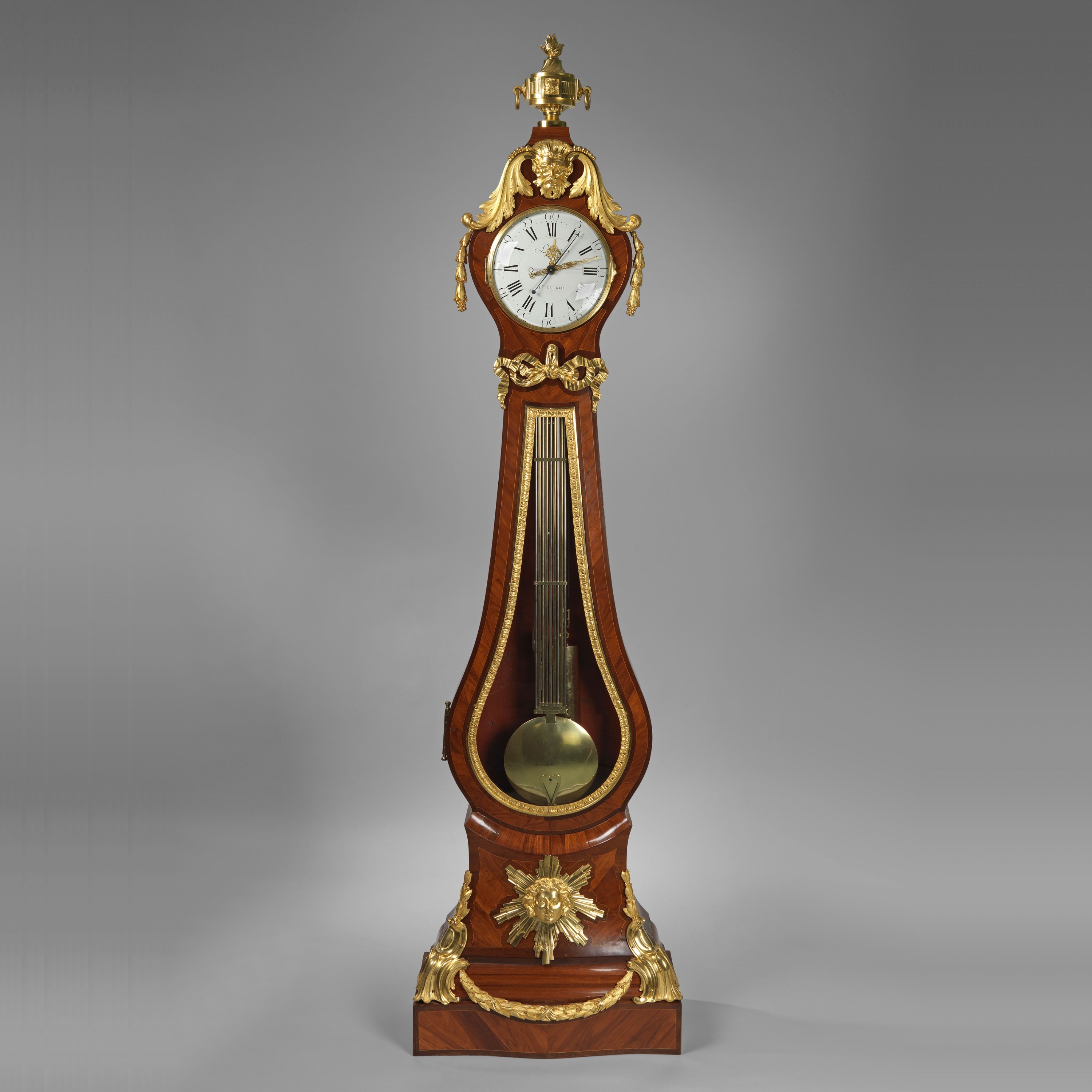
Circa 1770
A Late Louis XV Ormolu-Mounted Tulipwood and Amaranth Regulateur de Parquette by Lepaute. Circa 1770

Nicolas Petit, maître 1761
This régulateur numbers among a prestigious series of closely related examples by Nicolas Petit (1732-1791). Here, as on most of these examples, Petit collaborated with Lepaute, referring to both Jean-André Lepaute (1720-1787), clockmaker to Louis XVI, and his brother, Jean-Baptiste (1727-1802), successor to the royal appointment. Petit and Lepaute evolved the model to reflect nuances in fashion, subtly altering mounts and elongating the case into the bulbous lyre shape seen here.
Early examples from the 1760s are fronted by a solid door with an ormolu-framed glazed cartouche, revealing the pendulum balancier. Of elegant transitional style, the present clock retains the scrolled acanthus and mask mounts, which feature on earlier examples, but the plainer glazed door, showing the whole pendulum, suggests a stronger neoclassical influence and places it later in the series. For a comparison of the variant models see A. Droguet, Nicolas Petit. 1732-1791., Paris, 2001, pp. 68-72.
Measurements
| DIMENSIONS | CM | INCHES |
|---|---|---|
| Width: | 61 | 24 |
| Depth: | 29 | 11 |
| Height: | 229 | 90 |